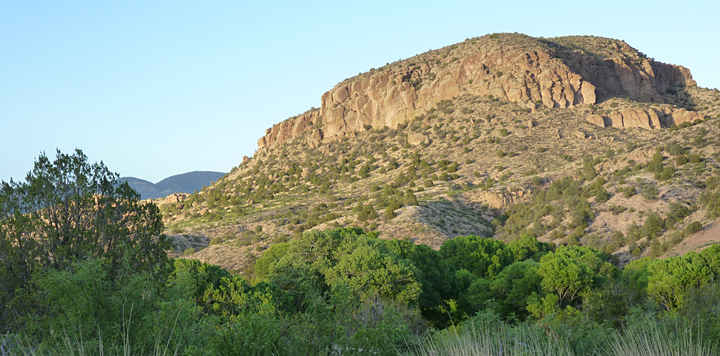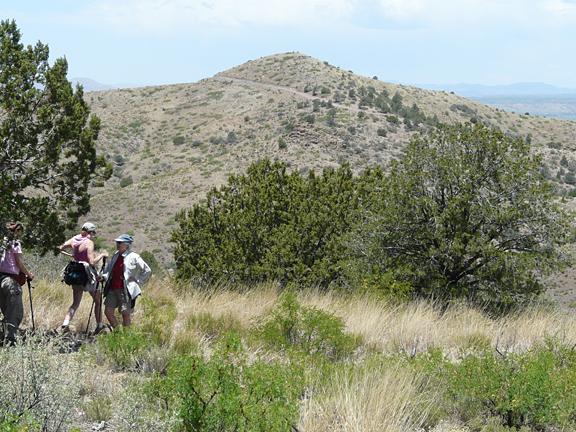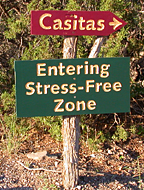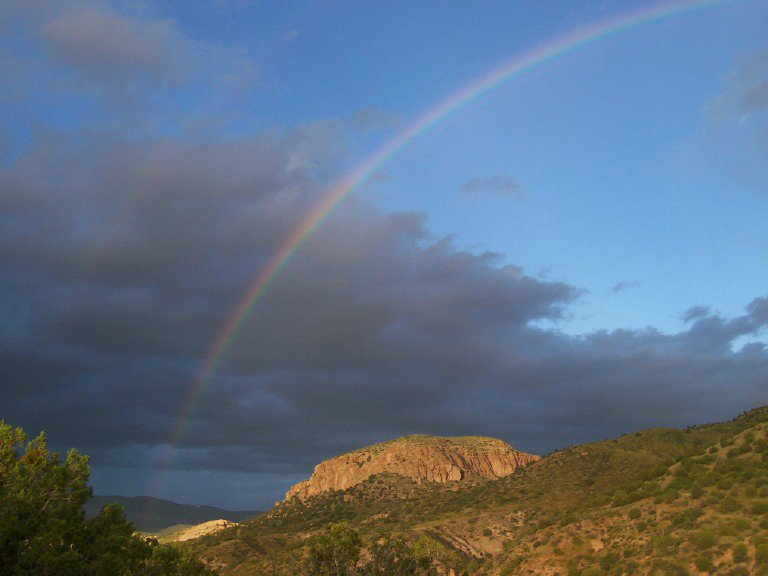
Given a few days off from the daily grind, most of us relish the thought of spending some time at the beach or in the forest or mountains. And when one can manage to make that escape, it is rare to not return refreshed, invigorated, and inspired to once more pick up the reins and plow ever onward through the routine of our daily lives.
Indeed, the positive effects of nature upon the human condition has been extolled by philosophers, naturalists, artists, poets, musicians, scientists, outdoor enthusiasts, and everyday folk from all walks of life for as long as there have been words to express them.
Climb the mountains and get their good tidings. Nature’s peace will flow into you as sunshine flows into trees. The winds will blow their own freshness into you, and the storms their energy, while cares will drop off like autumn leaves.
John Muir (1838-1914), Scottish-born American Naturalist
There is pleasure in the pathless woods,
There is a rapture on the lonely shore,
There is society, where none intrudes,
By the deep sea, and music in its roar:
I love not man the less, but Nature more,
From these our interviews, in which I steal
From all I may be, or have been before,
To mingle with the Universe, and feel
What I can ne’er express, yet cannot all conceal.
Lord Byron (1788-1824), British Poet of the Romantic Movement
I go to Nature to be soothed and healed, and to have my senses put in order.
John Burroughs (1831-1921), American naturalist and writer
I believe that there is a subtle magnetism in Nature, which, if we unconsciously yield to it, will direct us aright.
Henry David Thoreau (1817-1862), American Author, Poet, and Naturalist
I remember a hundred lovely lakes, and recall the fragrant breath of pine and fir and cedar and poplar trees. The trail has strung upon it, as upon a thread of silk, opalescent dawns and saffron sunsets. It has given me blessed release from care and worry and the troubled thinking of our modern day. It has been a return to the primitive and the peaceful. Whenever the pressure of our complex city life thins my blood and benumbs my brain, I seek relief in the trail; and when I hear the coyote wailing to the yellow dawn, my cares fall from me – I am happy.
Hamlin Garland (1860–1940), American Novelist, Poet and Essayist
There is new life in the soil for every man. There is healing in the trees for tired minds and for our overburdened spirits, there is strength in the hills, if only we will lift up our eyes. Remember that Nature is your great restorer.
Calvin Coolidge (1872–1933). 30th President of the United States
THE DRAW OF NATURE
Looking back over the years, it’s clear that the dominant constant in my own life has been the continual draw of Nature upon me, an undeniable attraction which shaped my chosen profession in geology and my long-term avocations. It is also clear that, with few exceptions, my times of greatest solace, joy, and insight have come when surrounded and immersed in the natural world of the sea or mountains, and now the high desert of New Mexico.

While one part of me has always simply accepted this draw as a personal preference, much as the above writers were moved to express. It’s also a fact that as a scientist, the WHY of this inexplicable attraction has puzzled me most of my adult life!
But of all my experiences in Nature, at no time have I had the continual immersion in the natural world as I have had during the past 25 years while Becky and I have been involved in the creation and operation of Casitas de Gila Guesthouses.
Perched on cliffs of Gila Conglomerate above the free-running flow of Bear Creek, and overlooking the Gila Wilderness, Becky and I have been privileged to live and work in one of the most visually spectacular and geologically and ecologically diverse areas in Southern New Mexico. The essence of Nature is incredibly strong here at the Casitas, enveloping us with a quiet and peaceful solitude and beauty that continues to amaze and overwhelm us. The Casitas are a place removed from the “out there” world beyond our gate, a place where weeks pass by like days and years pass by unnoticed. We frequently find ourselves wondering how 25 years have passed since we came to Gila. It hardly seems possible to us.
THE STRESS-FREE ZONE OF NATURE AND THE CASITAS

In the early days of Casitas de Gila Guesthouses, it became obvious to us that we were living in our own “stress-free zone” of Nature.
We began to notice that many of our guests would arrive stressed-out from their travel experiences. Yet we also observed how quickly they would calm down, relax, and unwind once they settled down in their Casita. For some guests, the change seemed to come from that first short walk along Bear Creek on one of the many trails of the Casita Nature Preserve. For other guests, it seemed to be nothing more than just sitting in front of their Casita enjoying the view of the Bear Creek canyon below and the Gila Wilderness beyond.
My scientific mind was noting that this calming was a repeatable effect, and I continually was wondering what had happened here, and WHY. And then, one hot day this past summer, a very short answer came. “Entrainment,” said the little voice in my mind. “Entrainment” was a phenomena I had long been familiar with, which, in its simplest form, means “when things come into sync”, and so I began to research. Here’s what I found.
WHAT IS ENTRAINMENT?
Entrainment is one of the more curious and interesting phenomena found in physics and other sciences. The prominent 17th century mathematician, astronomer, and physicist Christian Huygens is generally considered the first person to experiment and research the phenomena. In 1666, Huygens observed that when the pendulums of two clocks were set in random motion on the same wall, over a period of time the two pendulums would end up moving in synchrony in exactly opposite directions (anti-phase), regardless of their initial motion, a phenomena which he described as an “odd kind of sympathy”. Today, Entrainment in physics is referred to by the heady term of “mode locking of coupled driven oscillators” or the general process in which two interacting oscillating systems assume the same period.
Biomusicology and Chronobiology are two other sciences where Entrainment is observed.
In Biomusicology the term “entrainment” is used in reference to the synchronization of organisms to an external rhythm produced by other organisms. For example, you are biomusicologically entrained when you start tapping your foot in time with the band on stage.
Chronobiology is broader in application, in that it refers to the type of entrainment that occurs when endogenous or self-sustained physiological or behavioral events within an organism become synchronous in period or phase to that of an external environmental oscillation. An example would be the well-known entrainment of the circadian rhythm or “body clock” cycles found in humans, animals, plants, and other forms of life in response to the external natural cycles of the light of day and dark of night. The familiar jet-lag syndrome is a response to your body going out of synchrony with your established circadian rhythm.
Pursuing the foot tapping and jet lag examples a little further, one might ask just what is the process here? In the case of foot tapping, sound waves from the band’s instruments enter our ear and are processed in the brain, which sets up a rhythmic motor response in the muscles and tendons of the foot. If you are really into the music being played, the motor response spreads contagiously through the whole body, and, maybe to the embarrassment of your partner, you get up and start movin’ and groovin’ to the pulsing rhythmic sounds!
A similar thing happens in jet lag, where the brain, as it perceives the photons coming from the sun, establishes a light-sensitive internal clock, which determines various types of hormone regulation, bodily functions, and activities such as sleeping and eating. A simple proof for the fact that the brain is perceiving the external progressive rhythmic change of daylight versus darkness is offered by the fact that jet lag only occurs on flights traveling east or west across times zones (such as flying from New York to Los Angeles). In flying a similar distance south or north from New York to South America or Canada, one experiences no jet lag. In both of these examples it is the brain, of course, that acts as the primary agent of entrainment for the rest of the body.
Since the 1930s there has been extensive interest in and research investigating the various states of human consciousness and the corresponding rhythms of electrical brainwave frequencies within the brain during during different stages of wakefulness and sleep. Research has determined that these are the primary states of human brainwaves:
Delta (less than 4 Hz) — deep dreamless sleep
Theta (4 to 8 Hz) — light sleep; dreaming; meditation
Alpha (8 to 12 Hz) — awake but relaxed; daydreaming; meditation
Beta (12 to 39 Hz) — wide awake; working or focused concentration
In recent years a fascinating segment of this brain research has focused on developing equipment which produces specific frequencies of sound and light to entrain the brain to achieve these states of consciousness. Although this field of brain study is in its infancy, numerous studies have shown conclusively that, indeed, the brain does entrain to specific frequencies of artificially-induced auditory and visual stimulation.
This raises an interesting question. If artificially-induced entrainment of the brain is a proven phenomena, then could it also be possible that the state of mental and bodily well-being so often praised in prose and poetry, and what is being referred to here as the “Stress-Free Zone of Nature”, might be due to some form of naturally-induced entrainment acting on our brains? And if so, just what might be causing this entrainment?
While researching the types of natural electromagnetic frequencies occurring on our planet Earth that could possibly be involved, I eventually came to the conclusion that the most likely candidate is a natural phenomena known as the Schumann Resonance.
THE SCHUMANN RESONANCE — The Rhythm of Nature
Schumann Resonance frequencies are the principal electromagnetic frequencies in the Earth’s electromagnetic spectrum, and are global in distribution. They are produced in the spherical cavity between the Earth’s surface and the lower part of the upper atmosphere known as the ionosphere (a layer of electrons and electrically charged atoms and molecules extending upward from a height of about 30 miles). The ionization of these atomic particles is caused primarily by incoming radiation from the sun. The Schumann Resonance frequencies are produced by, and are constantly being re-energized by, the 50 or so lightning strikes that are occurring around the world every second of every day. When measured, these electromagnetic waves consist of a spectrum of extremely low and very low electromagnetic frequencies ranging from 3 Hz (Hertz or cycles per second) to 60 Hz. When this spectrum of frequencies is further measured and analyzed, it is found that the strongest frequency signal occurs at a dominant or fundamental frequency of 7.83 Hz, with a series of decreasingly intense higher resonance overtones spaced at 6.5 Hz intervals, (14.3 Hz, 20.8 Hz, etc., out to about 60 Hz).
In 1952, the German physicist Dr. Winfried Otto Schumann at the Technical University of Munich theorized, and later with the help of Dr. Herbert Konig, attempted to measure a series of naturally-occurring, extremely-low frequency resonances or oscillating electromagnetic waves in the atmosphere. In was not until the early 1960s, however, that the science and technology had advanced sufficiently to extract the exact frequencies of what are now known as the Schumann Resonances from the background electromagnetic noise in the atmosphere.
Basically, the discovery of the Schumann Resonances means that the natural world around us is pulsing along at 7.83 Hz — the Rhythm of Nature … the Heartbeat of the Earth.
HOW THE SCHUMANN RESONANCES INFLUENCE OUR LIVES
I have spent some time examining and comparing the available research concerning the phenomena of the Schumann Resonance and human brain entrainment. I have listed here a synthesis of some key aspects and understandings of that research.
- Schumann Resonances have existed on Earth since the beginning of life on the planet. Consequently, all life, including humans, has evolved within the constant presence and influence of these frequencies.
- Schumann Resonance frequencies are very weak in intensity but are global in effect. They are currently measured continuously at research stations around the world. Because they are so weak, Schumann frequencies are best measured in rural areas away from the ever-expanding and overpowering electromagnetic noise of modern civilization (such as power lines, cell phones, TV, wifi, etc.).
- Human brains can detect and react to weak external electromagnetic frequencies having the same intensity or strength as those of the Schumann Resonance.
- Various human biological mechanisms, processes, and health effects have been shown to be linked with, and influenced by, variation in the frequency and intensity of those frequencies within the range of Schumann Resonances. A few of the areas of such investigation include circadian rhythm, physical motor response reaction times, and hormone production and regulation.
- Dominant brain wave frequencies within humans show a range in frequency from less than 4Hz (Delta) to 39 Hz (Beta). This range corresponds precisely to the range of the strongest frequencies within the Schumann Resonance: 3 Hz to 35 Hz. Even more interesting is the fact that when we normally are asleep at night and our brain is cycling up and down in Delta and Theta frequencies, the Schumann Resonance frequency spectrum shifts downward to display an abundance of 3 Hz (Delta) frequencies.
- The fundamental or dominant frequency of the Schumann Resonances is found to average out at 7.83 Hz. It is this fact that is perhaps the most important and intriguing of all when attempting to fully understand that unique state of consciousness experienced in the Stress-Free Zone of Nature. As we now know, a frequency of 7.83 Hz falls precisely at that curious boundary between the Alpha and Theta states of consciousness frequencies of the human brain. This is the unique transitional boundary where our brain passes from the awake but stressless, greatly relaxed and meditative zone of Alpha consciousness through a hazy twilight region of barely awake/nearly asleep, and then on to pass into the mentally and physically refreshing and restorative light sleep zone of Theta.
THE SCHUMANN RESONANCE AND THE CASITAS’ STRESS-FREE ZONE
What does the Schumann Resonance have to do with the Casitas de Gila Stress-Free Zone?

The way I see it, the outside world has been humming along at 7.83 Hz since the beginning of time. For the human brain, 7.83 Hz is right at the boundary between Alpha and Theta, between awake-but-relaxed/daydreaming and light sleep/dreaming … a totally relaxed and refreshing state of being.
Once you arrive at Casitas de Gila, leaving the noise and stress of your regular world behind, your own rhythms synchronize with those of the natural world and you, in effect, are free to become one with nature. For me, that explains how our guests become “entrained” to the Casitas de Gila Stress-Free Zone. And why it is rare for me to want to leave the premises.

So, there you have it folks … the cogitations and deliberations of a left brain, scientific, and logical mind over the rhythms of the Stress-Free Zone of Nature.
As a scientist pointed out years ago, there seem to be two different methods by which correct answers to perplexing problems in science are arrived at. One is by capturing the answer to the problem in a logical, objective box, and the other is by capturing the answer in an intuitive, subjective box. While the former generally requires a lot of time in the doing, is distinctively elegant, and definitely very strong, the latter often requires no time at all in perception, is certainly not as elegant, but over time will often prove to be just as strong.
So, now, dear reader, having endured no little stress in the researching of this blog, I definitely think it’s time for me to retire to our hammock down by Bear Creek, to once more totally relax and unleash my right brain in the Stress-Free Zone of Casitas de Gila Guesthouses!
Hope to see you here soon, so you can try it out for yourself!


